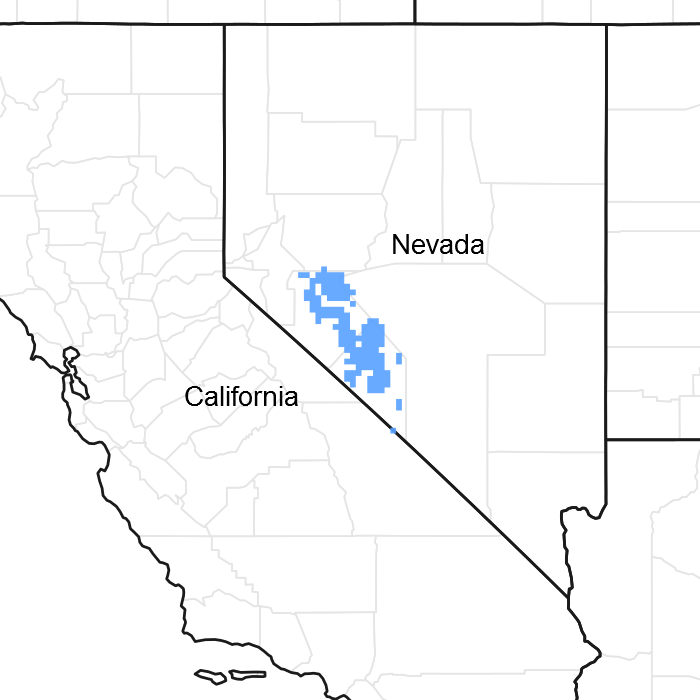Animal community
Livestock Interpretations:
This site is marginally suited for livestock grazing due to low forage production. Grazing managment should be keyed to perennial grass and palatable shrub production. Indian ricegrass is highly palatable to all classes of livestock in both green and cured condition. It supplies a source of green feed before most other native grasses have produced much new growth. When actively growing, galleta provides good to excellent forage for cattle and horses and fair forage for domestic sheep. Although not preferred, all classes of livestock may use galleta when it is dry. Domestic sheep show greater use in winter than summer months and typically feed upon central portions of galleta tufts, leaving coarser growth around the edges. Galleta may prove somewhat coarse to domestic sheep. Shadscale is a valuable browse species, providing a source of palatable, nutritious forage for a wide variety of livestock. Shadscale provides good browse for domestic sheep. Shadscale leaves and seeds are an important component of domestic sheep and cattle winter diets.
Shockley's wolfberry is sometimes used as forage by livestock. Palatability of Shockley's wolfberry browse is presumably fair to low. This species is used as forage only when more desirable species are unavailable. The fruit, however, appears to be moderately palatable. Bailey’s greasewood is an important winter browse plant for domestic sheep and cattle. It also receives light to moderate use by domestic sheep and cattle during spring and summer months. Greasewood contains soluble sodium and potassium oxalates that may cause poisoning and death in domestic sheep and cattle if large amounts are consumed in a short time. Budsage is palatable and nutritious forage for domestic sheep in the winter and spring although it is known to cause mouth sores in lambs. Budsage can be poisonous or fatal to calves when eaten in quantity. Budsage, while desired by cattle in spring, is poisonous to cattle when consumed alone.
Stocking rates vary over time depending upon season of use, climate variations, site, and previous and current management goals. A safe starting stocking rate is an estimated stocking rate that is fine tuned by the client by adaptive management through the year and from year to year.
Wildlife Interpretations:
Shadscale is a valuable browse species, providing a source of palatable, nutritious forage for a wide variety of wildlife particularly during spring and summer before the hardening of spiny twigs. It supplies browse, seed, and cover for birds, small mammals, rabbits, deer, and pronghorn antelope. Palatability of Shockley's wolfberry browse is presumably fair to low. This species is used as forage only when more desirable species are unavailable. The fruit, however, appears to be moderately palatable. The red berries are eaten by some birds and mammals. Berries of this plant constituted 2 percent of the diet of chukar partridges. Bailey’s greasewood is an important winter browse plant for big game animals and a food source for many other wildlife species. It also receives light to moderate use by mule deer and pronghorn during spring and summer months.
Budsage is palatable, nutritious forage for upland game birds, small game and big game in winter. Budsage is rated as "regularly, frequently, or moderately taken" by mule deer in Nevada in winter and is utilized by bighorn sheep in summer, but the importance of budsage in the diet of bighorns is not known. Bud sage comprises 18 – 35% of a Pronghorn’s diet during the spring where it is available. Chukar will utilize the leaves and seeds of bud sage. Budsage is highly susceptible to effects of browsing. It decreases under browsing due to year-long palatability of its buds and is particularly susceptible to browsing in the spring when it is physiologically most active. Indian ricegrass is eaten by pronghorn in "moderate" amounts whenever available. In Nevada it is consumed by desert bighorns. A number of heteromyid rodents inhabiting desert rangelands show preference for seed of Indian ricegrass. Indian ricegrass is an important component of jackrabbit diets in spring and summer. In Nevada, Indian ricegrass may even dominate jackrabbit diets during the spring through early summer months. Indian ricegrass seed provides food for many species of birds. Doves, for example, eat large amounts of shattered Indian ricegrass seed lying on the ground. Desert bighorn sheep of the Mojave Desert utilize galleta as forage. Galleta provides moderately palatable forage when actively growing and relatively unpalatable forage during dormant periods. Galleta provides poor cover for most wildlife species.
Hydrological functions
Rills and water flow patterns are none to rare in areas recently subjected to intense summer rainfall and on steep slopes. Pedestals are rare with occurrence typically limited to area within water flow patterns. Fine litter (foliage from grasses and annual and perennial forbs) are expected to move the distance of slope length during intense summer convection storms or rapid snowmelt events. Persistent litter (large woody material) will remain in place except during large rainfall events. Sparse shrub canopy and associated litter break raindrop impact. Medium to fine textured surface soils have moderate to slow infiltration and medium runoff.
Recreational uses
This site offers opportunities for photography and nature study. This site has potential for off-road vehicle use and hiking.
Other products
Seeds of shadscale were used by Native Americans of Arizona, Utah and Nevada for bread and mush. The leaves, seeds and stems of greasewood are edible. Indian ricegrass was traditionally eaten by some Native American peoples. The Paiutes used seed as a reserve food source.



